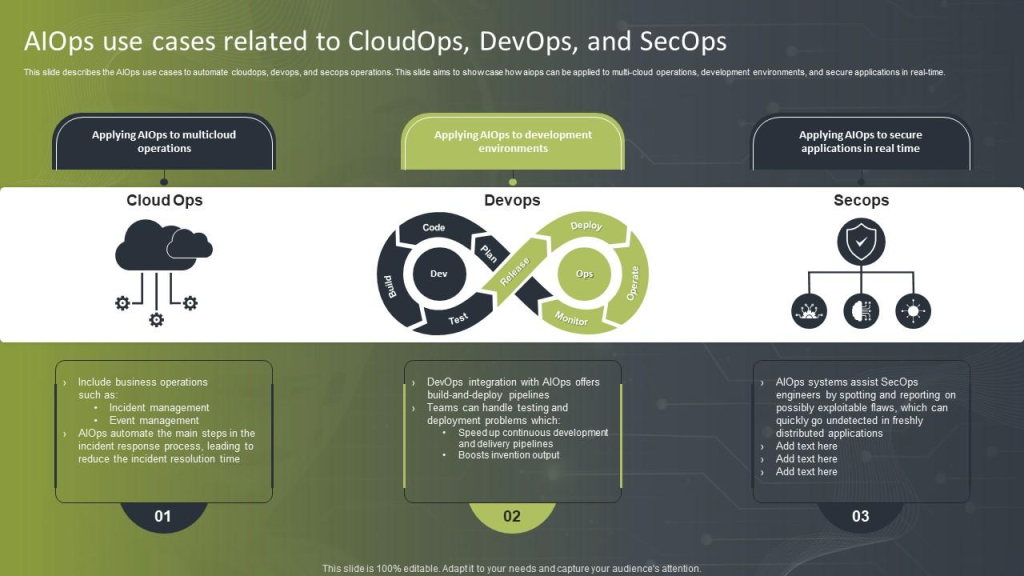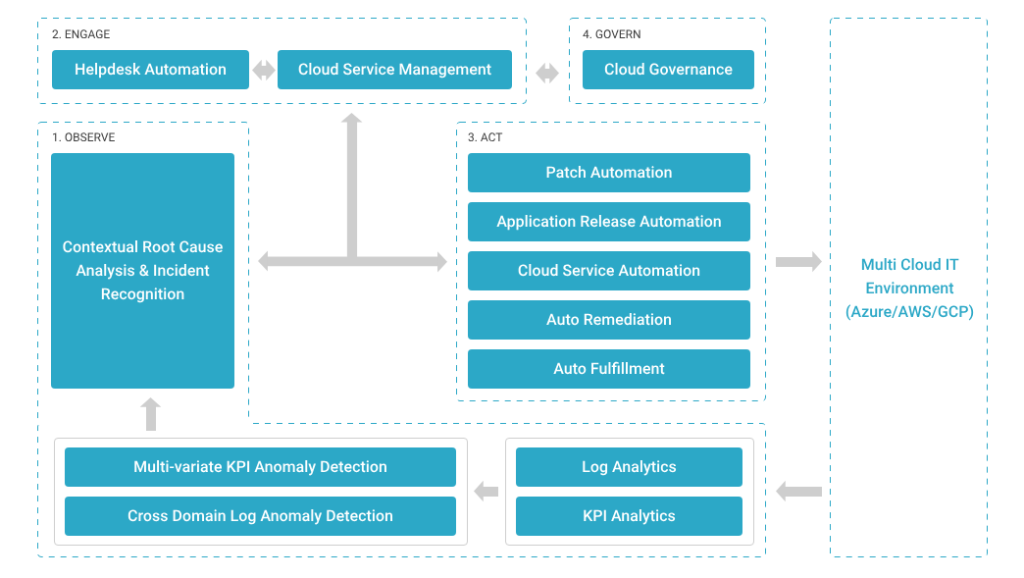Upgrade & Secure Your Future with DevOps, SRE, DevSecOps, MLOps!
We spend hours scrolling social media and waste money on things we forget, but won’t spend 30 minutes a day earning certifications that can change our lives.
Master in DevOps, SRE, DevSecOps & MLOps by DevOps School!
Learn from Guru Rajesh Kumar and double your salary in just one year.

Are you tired of managing your cloud operations manually? Do you want to optimize your cloud infrastructure and improve your business performance? If yes, then you need to embrace the power of AIOps.
In this article, we will explore how AIOps can help you streamline your cloud operations and take your business to the next level. We will cover the following topics:
- What is AIOps?
- How does AIOps work?
- Benefits of using AIOps for cloud operations
- Best practices for implementing AIOps in your organization
- Challenges and limitations of AIOps
What is AIOps?
AIOps stands for Artificial Intelligence for IT Operations. It is a technology that combines artificial intelligence, machine learning, and big data analytics to automate and optimize IT operations. AIOps can help organizations monitor, analyze, and manage their IT infrastructure, applications, and services more efficiently and proactively.
How does AIOps work?
AIOps works by collecting and analyzing vast amounts of data from various sources, such as logs, metrics, events, and traces. It then uses machine learning algorithms to detect anomalies, patterns, and correlations in the data. AIOps can also automate routine tasks, such as incident management, root cause analysis, and capacity planning, to reduce manual efforts and improve response times.
Benefits of using AIOps for cloud operations
Using AIOps for cloud operations can offer several benefits, including:

- Improved visibility: AIOps can provide real-time insights into your cloud infrastructure, applications, and services, allowing you to identify and resolve issues quickly.
- Enhanced performance: AIOps can help you optimize your cloud resources, improve application performance, and reduce downtime.
- Increased efficiency: AIOps can automate routine tasks, such as monitoring, alerting, and incident management, freeing up your IT staff to focus on more strategic initiatives.
- Better decision-making: AIOps can provide predictive analytics and forecasting capabilities, enabling you to make informed decisions about your cloud operations and investments.
Best practices for implementing AIOps in your organization
Implementing AIOps in your organization requires careful planning and execution. Here are some best practices to follow:
- Define your goals: Identify your business objectives and define the scope and requirements of your AIOps initiative.
- Collect relevant data: Ensure that you collect relevant data from your cloud infrastructure, applications, and services, and store it in a centralized repository.
- Choose the right tools: Select the AIOps tools that align with your business needs, budget, and technical capabilities.
- Train your staff: Train your IT staff on AIOps concepts, tools, and processes, and encourage a culture of continuous learning and improvement.
- Monitor and measure: Monitor the performance of your AIOps system and measure its impact on your business outcomes, such as uptime, response times, and customer satisfaction.
Challenges and limitations of AIOps
Despite its potential benefits, AIOps also poses several challenges and limitations, such as:

- Data quality: AIOps relies heavily on data quality, accuracy, and completeness. If your data is inconsistent or incomplete, your AIOps system may produce inaccurate or misleading insights.
- Skill gaps: Implementing AIOps requires a blend of technical and analytical skills, such as data science, machine learning, and cloud computing. Finding and retaining skilled staff can be a challenge for some organizations.
- Integration complexity: Integrating AIOps with your existing IT systems and tools may require significant effort and resources. It may also introduce new integration challenges and dependencies.
- Security and privacy: AIOps involves processing and analyzing sensitive data, such as customer information and business metrics. Ensuring the security and privacy of this data is critical to maintaining customer trust and compliance with regulations.
Conclusion
AIOps is a powerful technology that can help organizations automate and optimize their cloud operations. By combining artificial intelligence, machine learning, and big data analytics, AIOps can provide real-time insights, improve performance, increase efficiency, and enable better decision-making. However, implementing and managing AIOps requires careful planning, execution, and ongoing monitoring. By following best practices and mitigating the challenges and limitations, organizations can harness the full potential of AIOps and take their cloud operations to the next level.

Leave a Reply